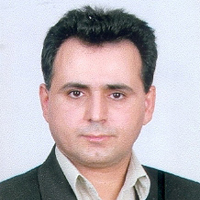Combined effects of depositional and diagenetic processes on the distribution of rock types in the Lucia petrophysical classification system: A case study of the Dalan and Kangan formations
Upper Dalan and Kangan carbonate formations with Late Permian–Early Triassic ages are considered the main gas reservoir rocks in some Persian Gulf fields. In this study, to investigate the factors affecting the distribution of reservoir rock types, microfacies and diagenetic processes in the upper part of Dalan and Kangan formations in one of the Persian Gulf fields have been investigated. A total of 1110 thin sections and 840 porosity and permeability data (RCAL data) were used. In the petrographic studies, 15 microfacies were classified into four facies belts of the tidal zone, lagoon, shoal, and open marine in an epeiric carbonate platform environment. Studies showed that diagenetic imprints such as calcite cementation, dolomitization, anhydrite nodule formation, dissolution, and compaction had been occurred in three marine, meteoric, and burial diagenetic environments. To investigate and group the reservoir rock types on the Lucia petrophysical diagram, the porosity and permeability data were plotted on this diagram. Depending on the type of microfacies and diagenetic processes, porosity and permeability data are included in all parts of the diagram. This study shows that the reservoir rock of the studied field is very heterogeneous in terms of reservoir properties and is affected by sedimentary and diagenetic processes. Accordingly, grain supported samples have been moved from classes one and two to the lower parts of the diagram, in the non-reservoir section, due to calcite and anhydrite cement. In contrast, in some cases, dissolution and dolomitization in mud-supported microfacies led to data placement from class three of Lucia to classes one and two. Dissolution and dolomitization in grain-supported microfacies have resulted in the placement of these samples in the upper parts of classes one and two.
-
Paleoenvironmental and Paleoclimatic Changes and their Reciprocal Effects on Ancient Settlements in Southern Iran, with a Focus on the Halil Rud Cultural Zone, from 4000 to 2900 Years Ago
Alireza Vaezi *, Morteza Djamali, , Abdolmajid Naderi Beni
Iranian Archaeological Research Journal, -
Reservoir Characterization of the Ilam Formation using the Integrated Core Data and Petrophysical Logs in an Oilfield in the Abadan Plain, SW Iran
Saghar Sadat Ghoreyshi, Hamzeh Mehrabi *,
Petroleum Research, -
Dolomitization models and related fluid evolution in the carbonate platform of the Asmari Formation
Armin Omidpour *, Roghayeh Fallah-Bagtash, Hossain Rahimpour-Bonab, Reza Moussavi-Harami, Asadollah Mahbobi
Journal of Earth Science Researches, -
Modification of Winland Rock Typing Based on Reservoir Quality and Production Parameters in Carbonate Rocks
Kazem Saadat, Hossain Rahimpour-Bonab *
Petroleum Research,


